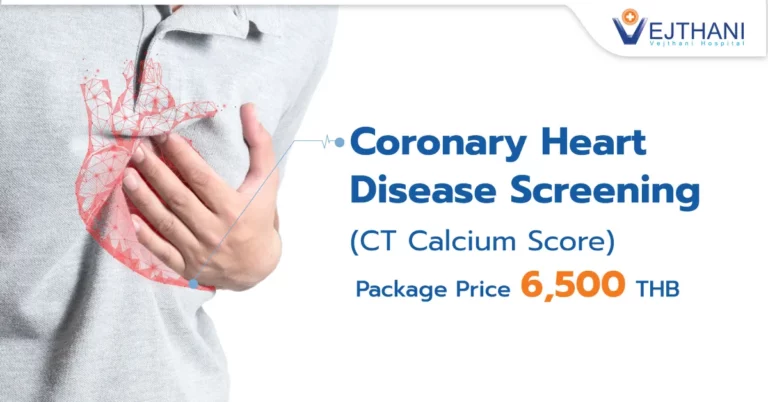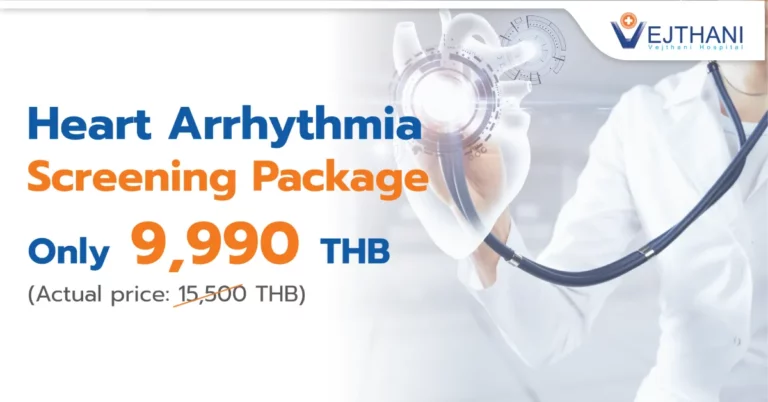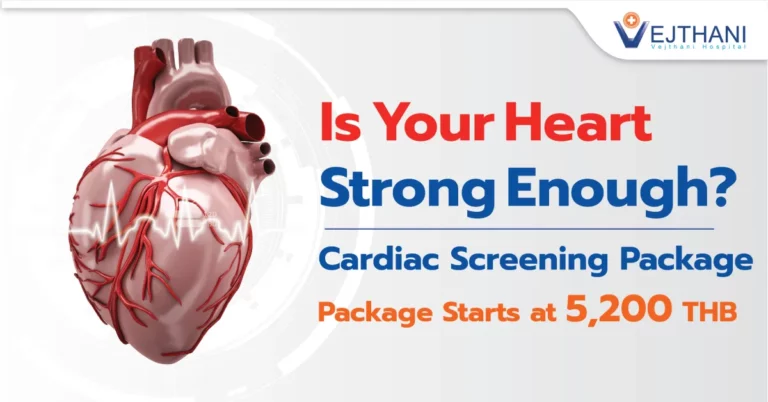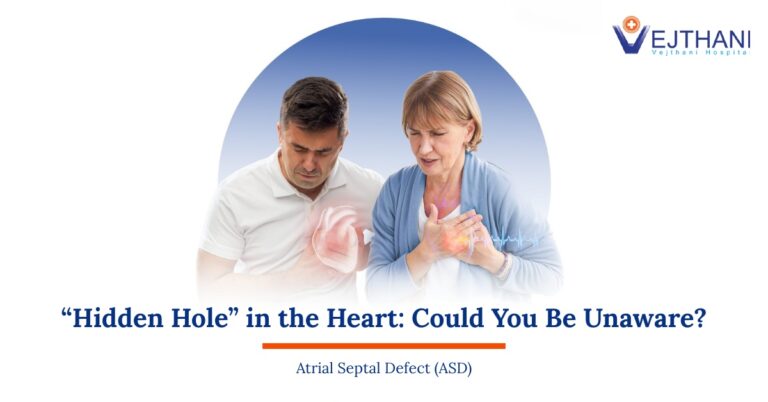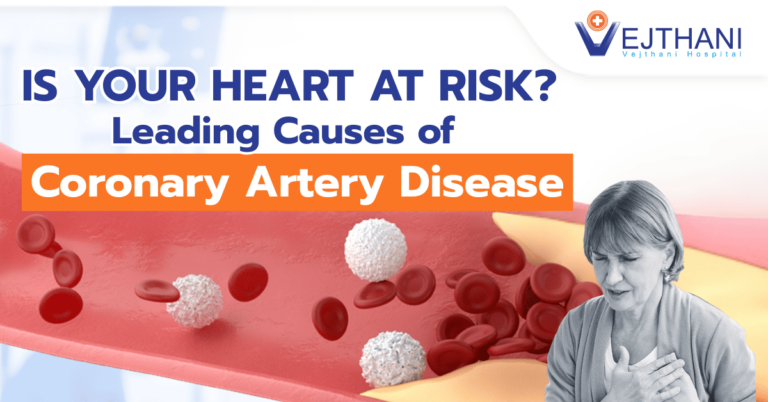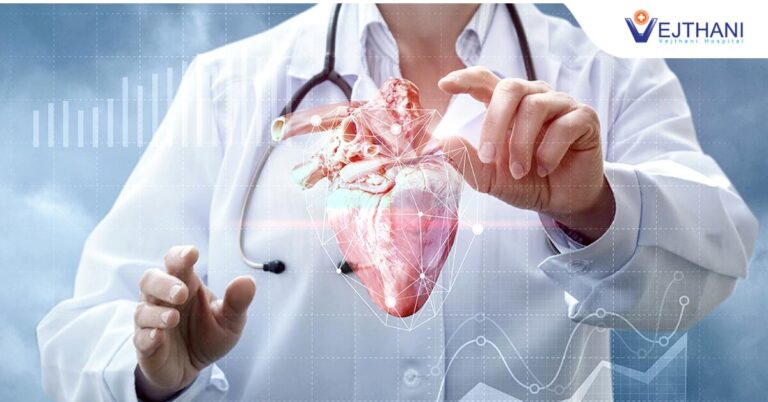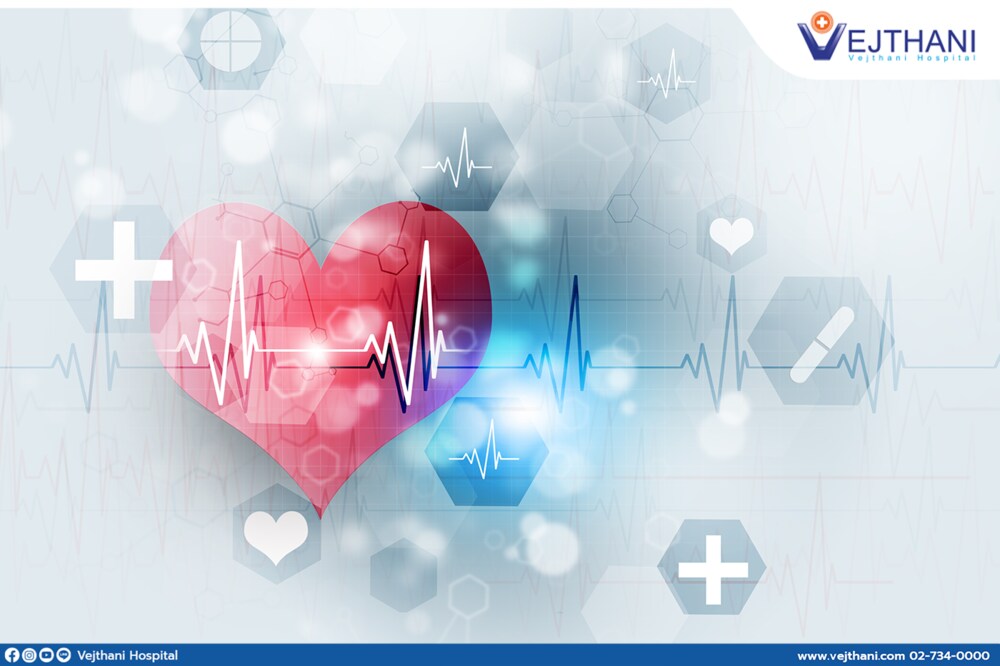

Vejthani Heart Center
The Vejthani Heart Center at Vejthani Hospital in Thailand provides a full range of services and is equipped to provide heart disease treatment, including treatment of arrhythmia.
Arrhythmia Treatment in Bangkok, Thailand
Vejthani Comprehensive Cardiac Center in Bangkok, Thailand consists of cardiologists specializing in heart disease treatments, including coronary artery disease, valvular heart disease, and heart arrhythmia. Our doctors also treat patients requiring interventional non-invasive cardiac imaging. To evaluate the heart and vascular systems using non-invasive techniques, we have advanced Non-invasive Cardiovascular Imaging Laboratory.
Cardiac Arrhythmia
Cardiac arrhythmia (also known as dysrhythmia) is a term for any of a large and heterogeneous group of conditions in which there is abnormal electrical activity in the heart. The heartbeat may be too fast or too slow, and may be regular or irregular.
Some arrhythmias are life-threatening medical emergencies that can result in cardiac arrest and sudden death. Others cause symptoms such as an abnormal awareness of the heartbeat (palpitations), and may be annoying. Still others may not be associated with any symptoms at all, but may predispose the patient toward a potentially life-threatening stroke or embolus.
Some arrhythmias are very minor and can be regarded as normal variants. In fact, most people will sometimes feel their heart skip a beat, or has an occasional extra strong beat; neither of these is usually a cause for alarm.
The term sinus arrhythmia refers to a normal phenomenon of mild acceleration and slowing of the heart rate that occurs with breathing in and out. It is usually quite pronounced in children, and steadily decreases with age. This can also be present during meditation breathing exercises that involve deep inhaling and breath holding patterns.
The term cardiac arrhythmia covers a large number of very different conditions.
The most common symptom of arrhythmia is an abnormal heartbeat, termed palpitations. These may be infrequent, frequent, or continuous. Some of these arrhythmias are harmless (though distracting for patients) but many of them predispose the patient to adverse outcomes.
Some arrhythmias do not cause symptoms, and are not associated with increased mortality. However, some asymptomatic arrhythmias are associated with adverse events. Examples include a higher risk of blood clotting within the heart and a higher risk of insufficient blood being transported to the heart because of a weak heartbeat. Other increased risks are of embolisation and stroke, heart failure and sudden cardiac death.
If an arrhythmia results in a heartbeat that is too fast, too slow or too weak to supply the body’s needs, this manifests as a lower blood pressure and may cause lightheadedness, dizziness, or fainting.
Medical assessment of the abnormality using an electrocardiogram is the best way to diagnose and assess the risk of any given arrhythmia.
Diagnosis
Cardiac dysrhythmias are often first detected by simple but nonspecific means: auscultation of the heartbeat with a stethoscope, or feeling for peripheral pulses. These cannot usually diagnose specific dysrhythmias, but can give a general indication of the heart rate and whether it is regular or irregular. Not all the electrical impulses of the heart produce audible or palpable beats; in many cardiac arrhythmias, the premature or abnormal beats do not produce an effective pumping action and are experienced as “skipped” beats.
The simplest specific diagnostic test for assessment of heart rhythm is the electrocardiogram (abbreviated ECG or EKG). A Holter monitor is an EKG recorded over a 24-hour period, to detect dysrhythmias that may happen briefly and unpredictably throughout the day.
Treatment
Because arrhythmias are such a heterogeneous group of conditions, treatment needs to be carefully selected by a cardiologist at Vejthani Comprehensive Cardiac Center in Thailand. Some arrhythmias require no treatment at all. Others require immediate emergency treatment.
Treatments include physical maneuvers, antiarrhythmic drugs, other drugs, electricity, and electro or cryo cautery.
Physical manoeuvres
A number of physical acts can increase parasympathetic nervous supply to the heart, resulting in blocking of electrical conduction through the AV node. This can slow down or stop a number of arrhythmias that originate above or at the AV node. Parasympathetic nervous supply to the heart is via the vagus nerve, and these maneuvers are collectively known as vagal maneuvers.
Antiarrhythmic drugs
There are many classes of antiarrhythmic medications, with different mechanisms of action and many different individual drugs within these classes. Although the goal of drug therapy is to prevent arrhythmia, nearly every antiarrhythmic drug has the potential to act as a pro-arrhythmic, and so must be carefully selected and used under medical supervision.
Other drugs
A number of other drugs can be useful in cardiac arrhythmias.
Several groups of drugs slow conduction through the heart, without actually preventing an arrhythmia. These drugs can be used to “rate control” a fast rhythm and make it physically tolerable for all the patients.
Some arrhythmias promote blood clotting within the heart, and increase risk of embolus and stroke. Anticoagulant medications such as warfarin and heparins, and anti-platelet drugs such as aspirin can reduce the risk of clotting.
Electricity
Dysrhythmias may also be treated electrically, by applying a shock across the heart either externally to the chest wall, or internally to the heart via implanted electrodes.
Cardioversion is either achieved pharmacologically or via the application of a shock synchronized to the underlying heartbeat. It is used for treatment of supraventricular tachycardias. In elective cardioversion, the recipient is usually sedated or lightly anesthetized for the procedure.
Defibrillation differs in that the shock is not synchronized. It is needed for the chaotic rhythm of ventricular fibrillation and is also used for pulseless ventricular tachycardia. Often, more electricity is required for defibrillation than for cardioversion. In most defibrillations, the recipient has lost consciousness so there is no need for sedation.
Defibrillation or cardioversion may be accomplished by an implantable cardioverter-defibrillator (ICD).
Electrical treatment of dysrhythmia also includes cardiac pacing. Temporary pacing may be necessary for reversible causes of very slow heartbeats, or bradycardia, (for example, from drug overdose or myocardial infarction). A permanent pacemaker may be placed in situations where the bradycardia is not expected to recover.
Electrical cautery
Some cardiologists further sub-specialise into electrophysiology. In specialized catheter laboratories, they use fine probes inserted through the blood vessels to map electrical activity from within the heart. This allows abnormal areas of conduction to be located very accurately, and subsequently destroyed with heat, cold, electrical or laser probes.
This may be completely curative for some forms of arrhythmia, but for others, the success rate remains disappointing. AV nodal reentrant tachycardia is often curable. Atrial fibrillation can also be treated with this technique (e.g. pulmonary vein isolation), but the results are less reliable.
Visit the Vejthani Heart Center
If you are experiencing arrhythmia, make an appointment at the Vejthani Comprehensive Cardiac Center in Bangkok, Thailand. We can provide you with a medical evaluation to find out whether your specific type of arrhythmia requires treatment.
For more information, please contact
Cardiac Center, 5th floor, Vejthani Hospital
Call: (+66)2-734-0000 Ext. 5300
English Hotline: (+66)85-223-8888
- Readers Rating
- Rated 4.4 stars
4.4 / 5 ( Reviewers) - Outstanding
- Your Rating






















